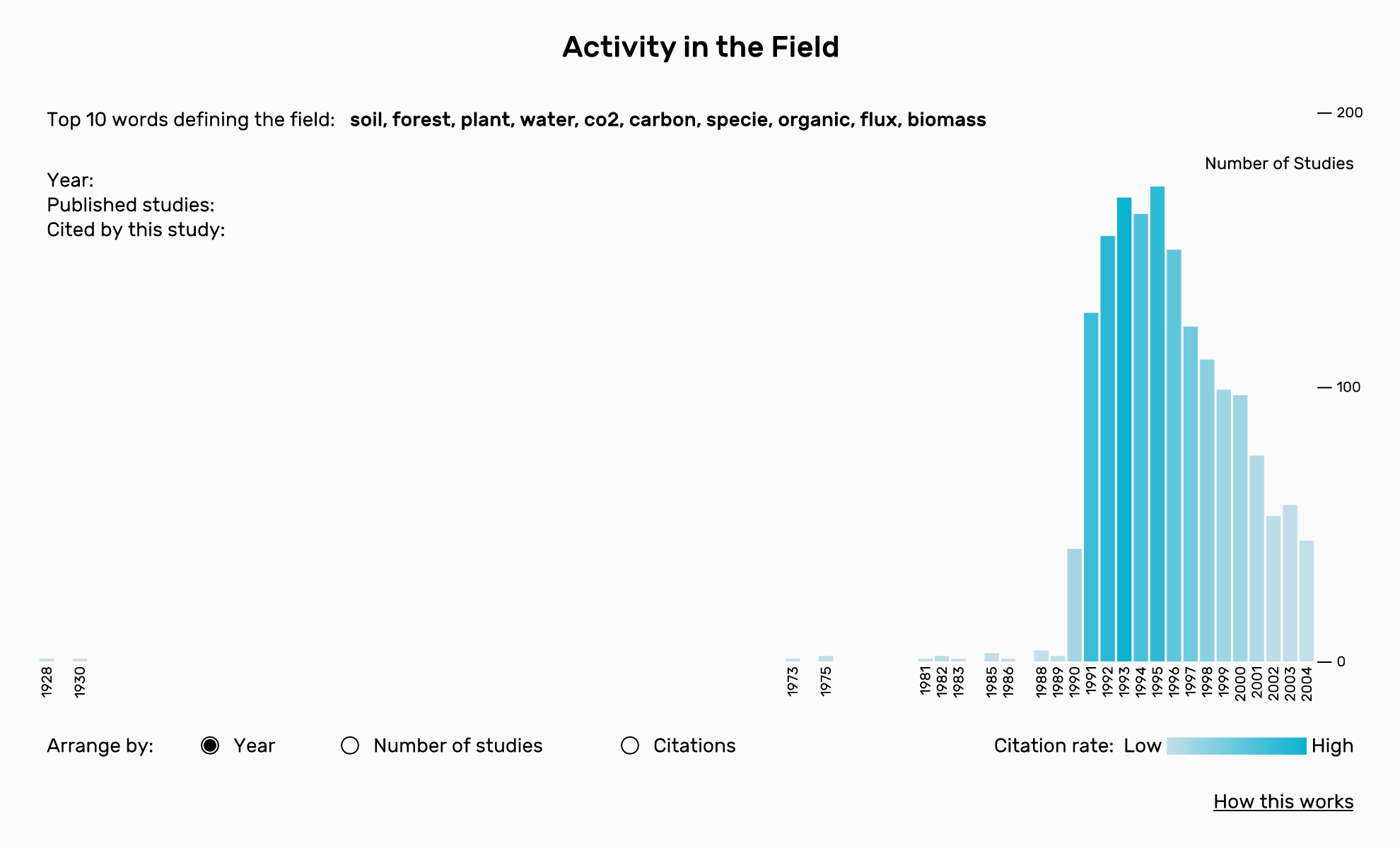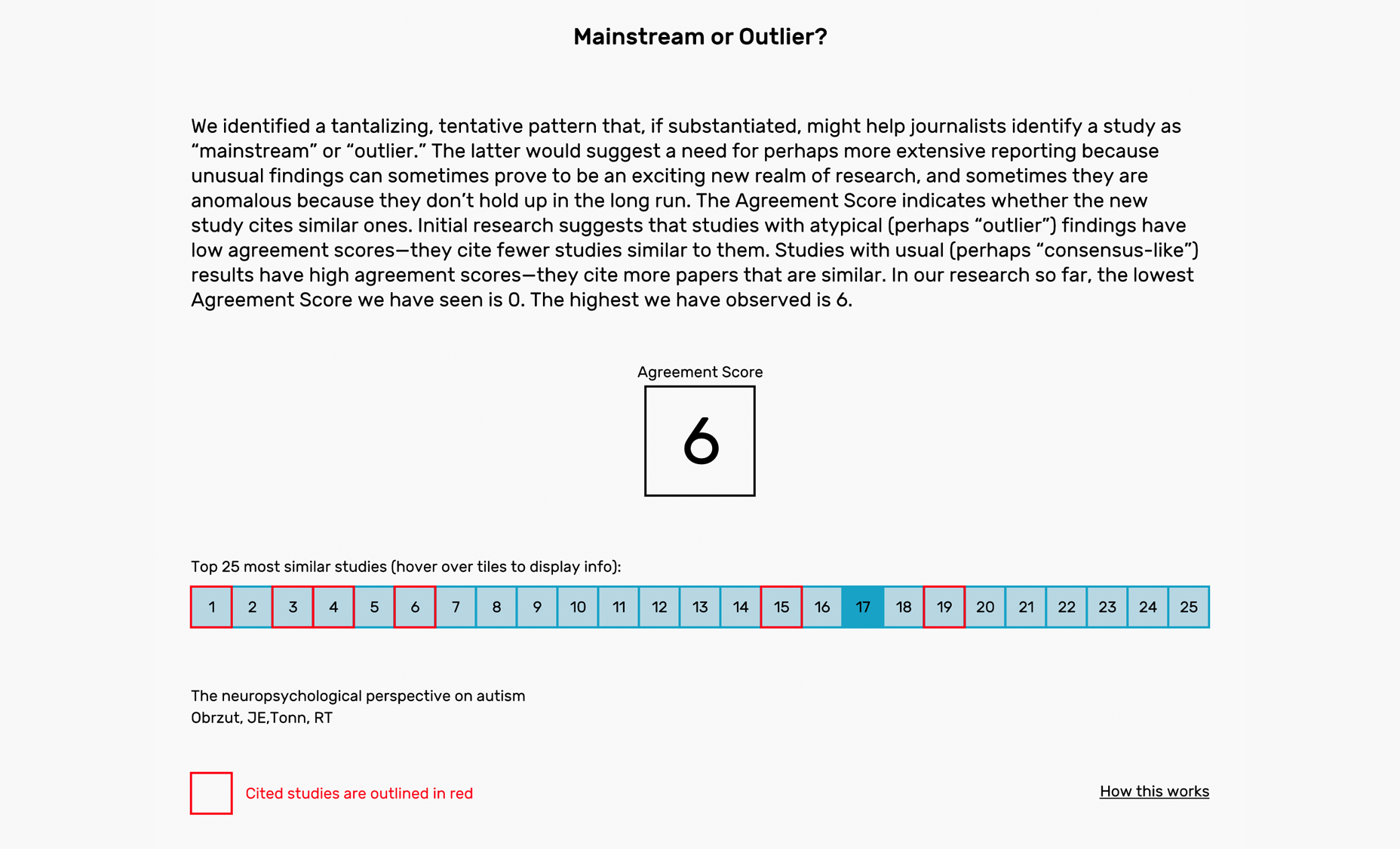
SCIENCE SURVEYOR
Visit the Science Surveyor websiteThis project was developed in collaboration with Marguerite Holloway, Dennis Tenen, Laura Kurgan, Grga Basic and a team of professors and researchers at Stanford University. Funding for this project was generously provided by a Magic Grant from the Brown Institute for Media Innovation.
Science Surveyor uses cutting-edge algorithms to characterize the scientific literature on a selected topic. Using the abstract and citations of a peer-reviewed paper, Science Surveyor provides journalists context about that paper in several easy-to-read visualizations.

One of the biggest challenges facing science journalists is the ability to quickly contextualize journal articles they are reporting on deadline. A science reporter must rapidly get a sense of what has come before in the field, understand whether the new paper represents a significant advance or not, and establish whether this finding is an outlier or part of the field’s consensus. Doing all that within a matter of hours or a few days is often impossible. The consequences of these limitations are serious and well documented. Science journalists are often overly dependent on expert sources, which encourages investigative complacency; they become vulnerable to presenting false balance and to covering articles that will be retracted; they sensationalize. As a consequence, the public often receives a mistaken view of science. Many people see science as a series of great new “discoveries” accompanied by a lot of hype; few understand its incremental character, its complexity, its nuance.

We propose designing a tool that can help science journalists and others to rapidly and effectively characterize the scientific literature for any topic they might cover, as a way to inform and assist news judgment and reporting. Science Surveyor seeks to do this through intuitive, clear interactive graphics that visualize trends in the scientific literature. It aims to show the centrality (or not) of the ideas in the new study, temporal patterns of publishing in the field, and social relationships (the networks of authors and institutions involved in related research).